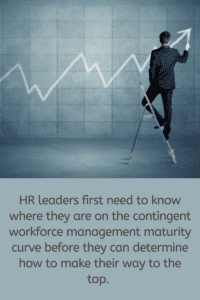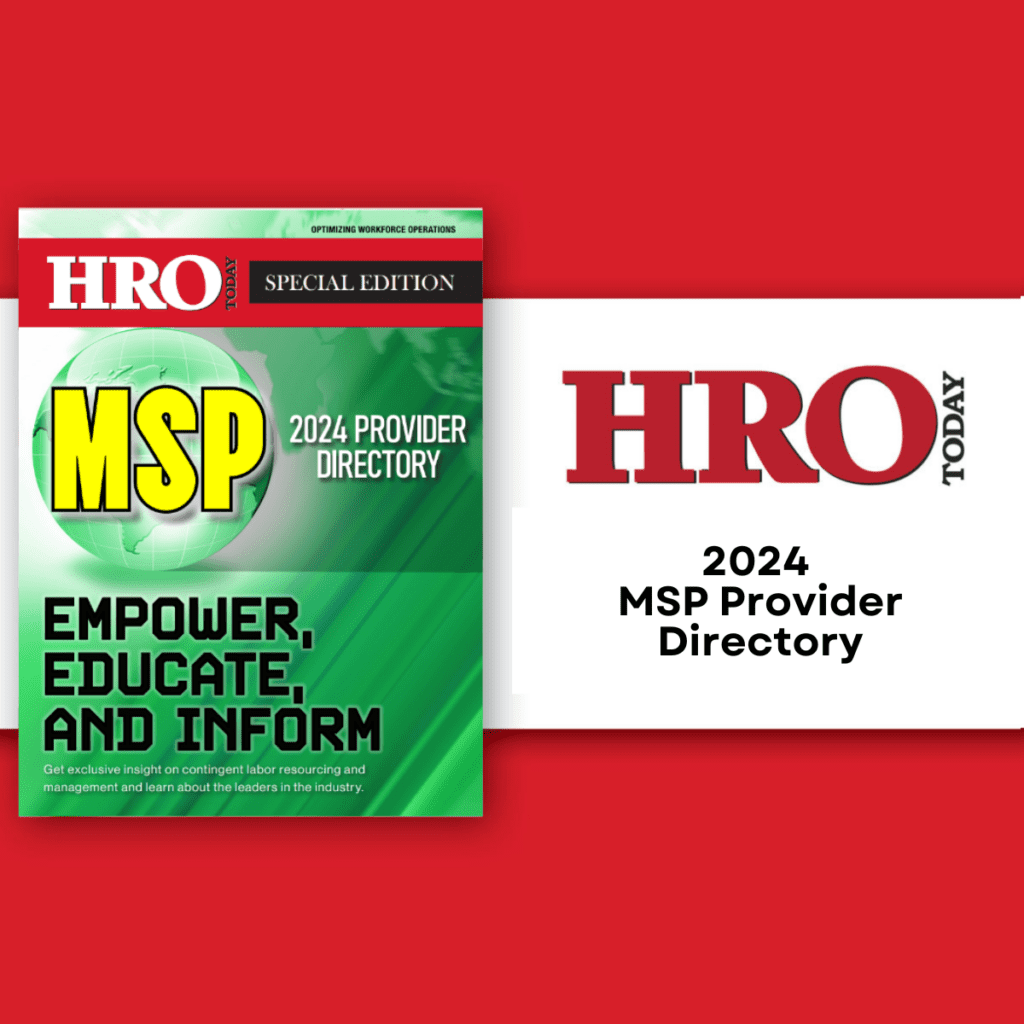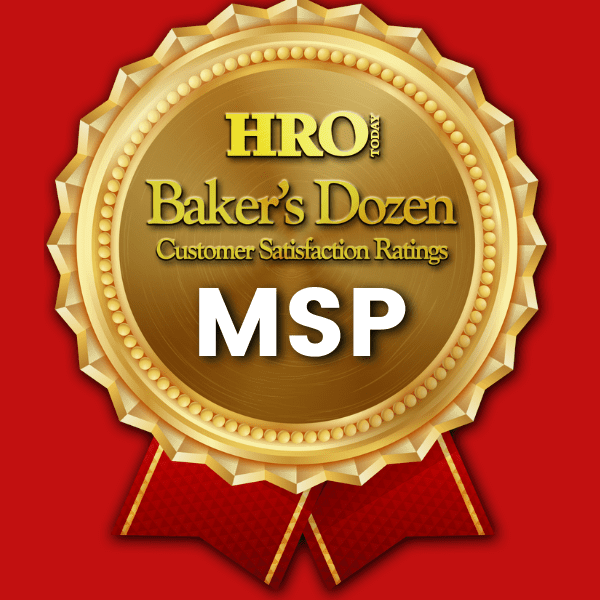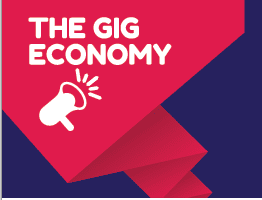Companies that know where they are in the contingent workforce management maturity curve have a head start in fully optimizing their programs.
By Zee Johnson
Organizations that leverage contingent workers often find themselves facing stagnation and want more from their approaches—especially as the market changes. For this, working with a proven MSP provider can boost stale contingent workforce management (CWM) programs with a much-needed refresher to reach new peaks or even hit full maturity. But where to begin?
Amy Bogan, Senior Vice President of Client Services for Magnit, says HR leaders first need to know where they are on the maturity curve; then they can determine how they can make their way to the top. There are five stages to contingent workforce management maturity.
- Stage 1: Unmanaged. At this point, organizations don’t have a formal program and contingent workers are typically managed from a relationship-based standpoint.
- Stage 2: Fragmented and tactical. This is often a first-generation program that sees the importance of gaining ground on the contingent workforce. There may be some adoption but overall, contingent labor is not fully optimized.
- Stage 3: Centralized and controlled. More internal alignment is present. It’s a scalable program that has high stakeholder engagement from HR and procurement. There’s also more control over rogue spending with governance being built around budgeting.
- Stage 4: Distributed and empowered. The program is shifting into more cross-functional engagement and executive sponsorship involvement. Processes are stronger and there are more proactive decisions being made.
- Stage 5: Fully integrated. At this level, the enterprise-wide program has C-suite engagement. HR is looking holistically at a total talent solution, both from a non-employee to an employee strategy.
After doing a thorough analysis of the status of the program, aligning stakeholders is the best way to see what’s next. “We go through each of those areas and do an evaluation, and then we will bring that information back, ideally, to a cross-functional group within the client site,” Bogan says. “So, you have representation from HR, procurement, finance, and business leaders who are more highly engaged in the program and interested in advancing the program vision.”
With specific business goals in mind, an effective road map is forged by going through a bevy of questions. An MSP provider should answer the following questions to help define strategy.
- What areas need improvement?
- What action items will drive maturity?
- What type of governance model will help achieve accountability?
As organizations climb the curve and begin witnessing more structure, stronger operations, and technology optimization, tracking the rate of adoption will help measure progress and success. “I think program adoption is really a key to understanding. When you look at the totality of non-full-time employees, headcount and spend, how much of that is being adopted into the program?” Bogan says. “The more adoption that you have shows that this program works for your end user, for your hiring manager. So, they’re going to be engaged because they’re getting a good experience and the organization can more quickly realize the program benefits.”
Time to fill is a traditional measure of success, but taking a closer look at each stage can provide further insight that can be leveraged for long-term improvements. Bogan suggests reviewing data around these types of questions.
- How long does it take for a submitted candidate to enter the queue for review?
- How many days does the interview process require?
- Are candidates leaving the interview process?
- Are there too many interviews?
- Are contract terms desirable?
Metrics from these specific outlooks can drive improvements and quality of efforts that will in turn reduce hiring time and increase time to productivity.
Evolving with Market Conditions
Having a mature CWM program will help organizations more easily navigate changing market conditions. Increases in inflation, remote work, skills gaps, and global talent pools are all impacting organizational strategies.
One factor that cannot be overlooked is suppliers, says Bogan. “Supplier optimization is critical. As the program is maturing, it’s important to make sure the right suppliers are engaged so that they can deliver in this evolving market,” she explains.
The right suppliers will continue sourcing and delivering the best of talent, no matter the climate or changing demand in skills. “As new skills emerge, suppliers are engaged and have the expertise to be able to support those evolving needs,” Bogan says.
Talent landscaping is another strategy that can help an organization remain agile. Looking beyond corporate headquarters and where hiring managers are to locations where talent is accessible is a game-changer. “The ability to look for talent and expand outside of the smaller footprint of the past is a huge way to support this dynamic market that we’re experiencing,” Bogan says.
In the end, an efficient MSP program is the critical partner in navigating the governance models, program buy-in, trials, tests, errors, and so forth that ultimately drive faster time to fill, greater access to talent and incremental cost savings.
Click here to learn more about accelerating contingent workforce management maturity.














